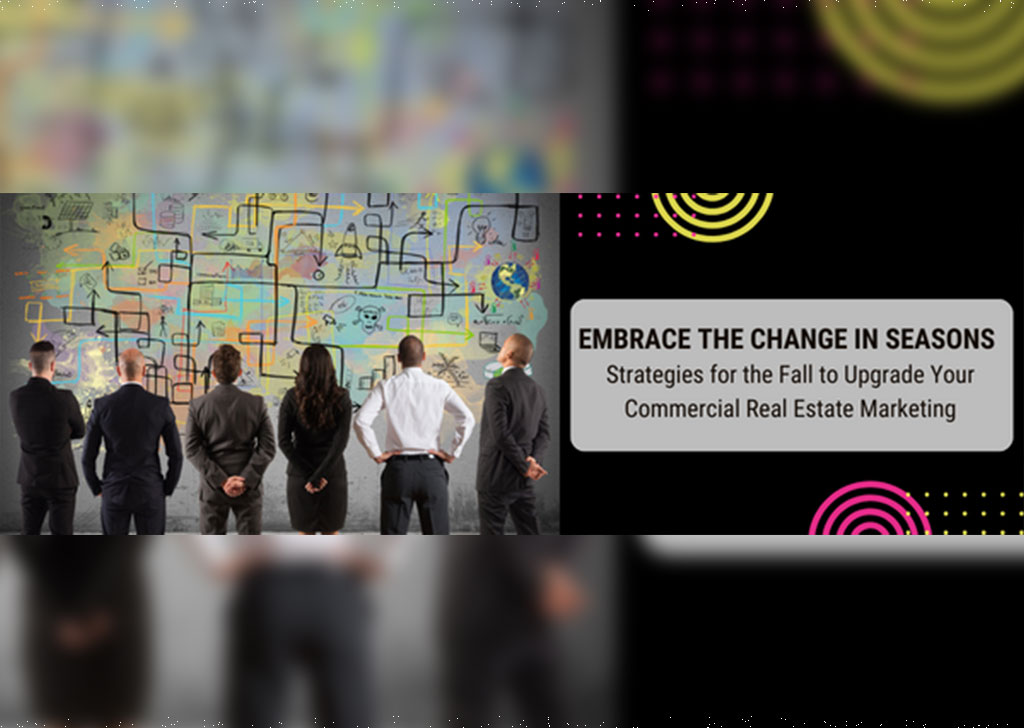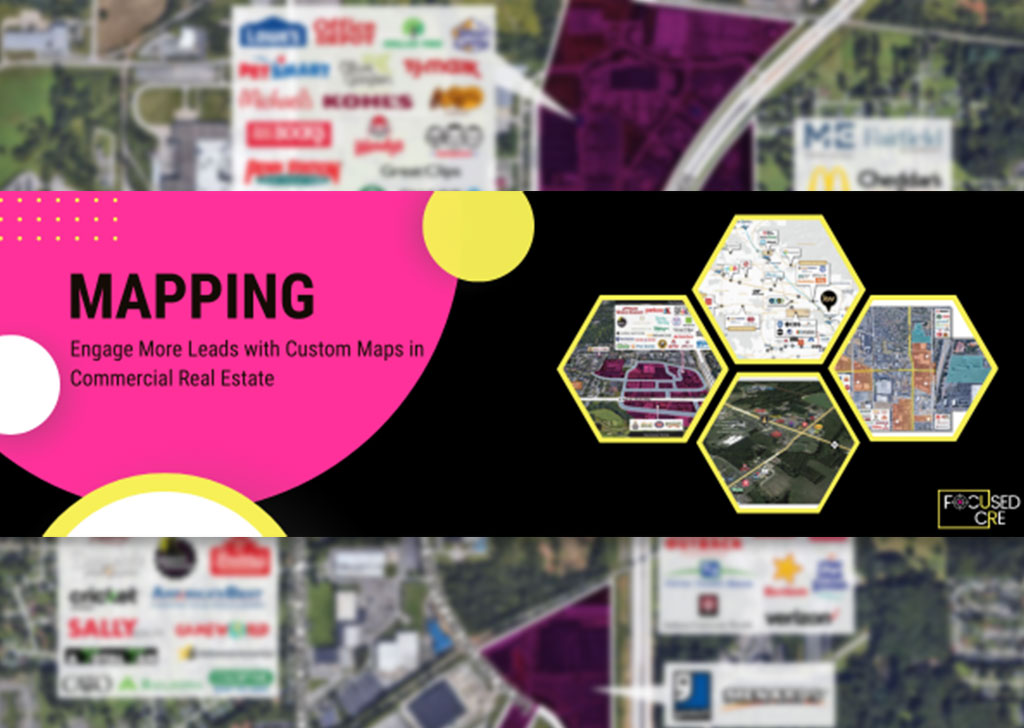3 CRE Marketing Tips you can Implement Today
Emerging technology has changed numerous industries, and commercial real estate (CRE) is a sector in active transition. Especially for tasks related to marketing, technology is increasingly crucial for success. CRE professionals must adapt and be up to date on industry best-practices to keep their head above water in this evolving, post-pandemic market. However, who has the time to work on their multiple properties and become a marketing expert at the same time?
Outsourcing your marketing has become an increased market trend in the commercial real estate world. Make sure you read our previous blog on why to outsource your CRE marketing to learn more about this.
Marketing technology, referred to as martech, is a category in the marketing landscape that is also affecting the CRE world. Martech refers to the technologies companies use to execute a digital marketing strategy and includes tools for building, running, managing, and measuring marketing campaigns. A marketing technology stack is the collection of these tools, which include customer relationship management (CRM) software, customer success (CS) software, website marketing tools for lead generation and SEO, and AI-powered data analysis tools. While many brands have extensive martech stacks, a 2020 Gartner survey revealed that only 18% of brands feel they leverage them as effectively as possible for marketing performance.
In the last two years, commercial real estate has undergone a digital transformation, catalyzed in part by the COVID-19 pandemic and the need for better digital resources. Martech is an undeniably essential component of a streamlined marketing strategy, and commercial real estate professionals stand to gain considerably from the early and ongoing adoption of martech tools.
So where to even begin to ensure that your marketing strategy is up to date and not getting swallowed by the Google algorithm? We have rounded up 3 tips you can implement today to give our marketing strategy a quick but effective facelift.
#1: EMAIL MARKETING
Simple enough to digest and implement, your email marketing is something you can easily audit to check its effectiveness.
Emails can keep your customers informed. Consumers can check their email when it is convenient for them. It can give them a feeling that you are thinking of them. This email can be as simple as saying: “Hi, you’re on our mind, here is a special offer!” or “Here is an update on what has been going on here in recent weeks.” Those that have signed up to your email list have already made a commitment to receive these notes. So they will likely enjoy these emails (as long as you give them something worth reading) and it will boost engagement with your customers.
Most email marketing tools offer the ability to track what happens after you have sent out your email campaign. You can track delivery rates, bounce rates, unsubscribe rates, click through rates, and open rates. This gives you a better understanding of how your email campaigns are working, which ones to tweak or which ones to get rid of altogether. These metrics should not be ignored. They are an important part of your internet marketing campaign. While there are various studies and surveys that present “optimal” numbers to aim for, it all depends on your industry and target audience. If your customers not only want but expect daily emails, you better provide them. However, sending too many emails to consumers who don’t want more than one a week will see your unsubscribe rate increase. It’s all about knowing your customers and providing valuable content.
#2: WEBSITE TRAFFIC
Requiring a bit more tech knowledge than email marketing, website traffic is a great benchmark to check for to see if your website is performing optimally. Whether you have a small business or a big one measuring website traffic is imperative to understand your visitors and how they engage with your website. Analyzing your website metrics or KPIs will help you assess the performance of your website. These metrics will also help you in optimizing your website and converting visitors into customers.
However, one might get confused as there are so many metrics to track. Which is why it is important to narrow down which metrics align with their business goals so that they can have the data they need. It is also important to note that not all the traffic coming to your website are leads. Useless website traffic will leave as soon as they visit. It is important that you track quality traffic that has a high potential to convert.
Some key metrics you can easily check on Google Analytics are:
Bounce is a single page session on your website. A bounce is measured as a session that triggers only one request to the Analytics server. For example, when a user visits your website and exists without taking any other action. Bounce rate is single-page sessions divided by all sessions.
If you want users to visit more than one page, then a high bounce rate is not ideal for your website’s success. This indicates that people are leaving your website without engaging. However, if you have a single-page site such as a blog or any other type of content where a single session is expected then high bounce rate is normal.
Unique visitors are first time visitors to your website for a certain period of time. They are counted once even if they have visited your site before. Unique visitors are identified by their IP address along with the cookie on the browser they are using. For example, if a user visits your website 4-5 times in a day it will still be counted as one visit. However, if they visit your site from a different device then that might count as a new visit.
Finally, channels are sources through which users come to your website. You need to monitor different channels to better understand your user behavior. This also helps you know which marketing efforts are successful in driving traffic to your website. These channels can include organic search, direct, referrals, social media, email, paid search and more. It is important to keep a track of all these sources and look at which ones are contributing more.
#3 MARKETING COLLATERAL DESIGN
Design has many different connotations depending on its application. It’s an incredibly fluid industry. In short, design can be whatever you want it to be — as long as you don’t forget some of its predefined tenets. These are known as the principles of design.
Balance is how objects in a composition are arranged and what visual weight they carry. Balance can be achieved using the following methods.
Symmetry (Formal balance): When objects are arranged evenly around a vertical or horizontal axis. Objects are arranged around a central point (or a radius) is known as radial symmetry.
Asymmetry (Informal balance): When objects are arranged unevenly around a vertical or horizontal axis. Typically, there’s one dominant side or element in an asymmetrical composition.
Contrast refers to how elements in a composition differ. This principle is often paired with the principle of similarity, which is how composition elements resemble each other. Contrast can be established using design elements like color, space, form, size, and texture.
Dominance refers to the varying degrees of emphasis within a composition. Emphasis is typically achieved using elements like size, font choice, and certain color combinations (that may create contrast). There are three main stages of dominance in design. The visual center is where we naturally focus on a piece of visual design. It’s slightly above and to the right of the actual center of a composition and is often referred to as “museum height”.
You can check out our full gallery to see different design options and ideas we have worked on.
Getting started on your marketing strategy audit should not be a daunting task. Lets connect to see how we can help you get started.











